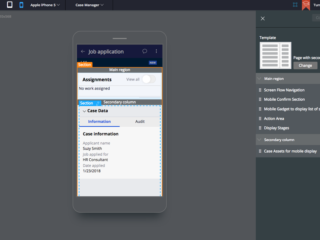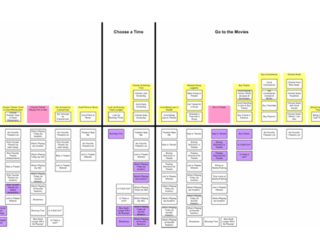The other day I was at Starbucks, and noticed that the business cards on the counter were a little different than normal. The front appeared to be a standard business card, but it was imprinted with Braille and had large, high-contrast text on the back with the key details.


This is a great example of universal design!
- Braille embossing supports people with blindness
- Large font on the back supports people with low vision
- The design is within the Starbucks brand, and is visually appealing
- The accessible enhancements on the card are included non-intrusively with the card, and don’t require this user group to other themselves.
Braille embossing
This card with embossed with braille print. The bumps were clear, on thick paper, and felt distinct. (Unfortunately, I cannot say if the content was good.)
Adding braille to a business card is a practice that supports braille readers. Another great example of braille business cards is from the company Eone.

Eone is a company that manufactures a watch that can be read by both sight and touch. They use a braille embosser to add braille to all their business cards.
Their business cards are not only accessible, but are considerate of their customers. It also reinforces the brand message of reading by sight and touch.
Unfortunately, printing braille is not the full solution for accessibility. Braille literacy is not as common as it once was. In the 1950s, over 50% of blind students could read braille. But a 2016 study found that only 8.5% of current blind students are braille literate.
People who are not braille literate may rely on audio and other technology solutions. For this group, providing business card information on the Starbucks website is necessary.
Large font on back
Blindness is one of many different difficulties a person may have with vision. Many people have reduced vision due to illness, age, or other circumstances.
This group has access to the same technology as the blind (such as audio), but they are also able to read large print.
On the web, many of these users zoom their browser or use applications like ZoomText to read. In the physical world, this group can use glasses or magnifiers. But, the most accessible way to account for this group is to have large and clear text.
The American Council for the Blind recommends text which is at least 18pt, a sans serif font, and bold. This group also recommends thick paper and paper with an eggshell finish. The Starbucks card meets these requirements.
Visual appeal
Accessible design is sometimes criticized for being less visually appealing than non-accessible design. That criticism does not apply to this well-designed card.
The large text side of the card is well laid out and reinforces the Starbucks branding. The all-green background feels expensive, and still has enough contrast to be readable. (Black-on-white text has optimal contrast, but this design choice is reasonable.)
Apart from the design, the thickness of the card (required for braille embossing) makes the card feel substantial.

Universal Design Success
Seeing a universal design success such as this one is wonderful.
The design is consistent with the Starbucks brand. It accounts for vision from blind to fully sighted without sacrificing style. More universal design like this is what we need in the world!





Leave a Reply